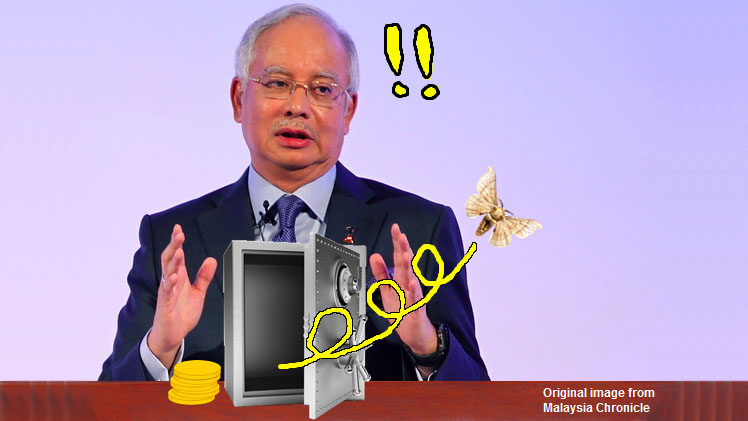Shrinkflation? Middle income trap? Here’s your senang guide to 7 common economic terms

- 98Shares
- Facebook78
- Twitter5
- LinkedIn5
- Email5
- WhatsApp5
Okay, be honest. Who actually reads the business section of the newspaper? This writer remembers when she was still a lil kid, the newspaper would be divided and grabbed on a first-come-first-serve basis, but the business part will always, ALWAYS go to this writer’s dad, because he was the only who could make sense of all those finance, business-y words.
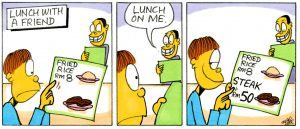
Over the years though, this writer has realized that being aware of the latest economic trends is just as important as knowing where to find the best cendol in town (very important, in case you didn’t know). But diving right in can be pretty confusing, what with all the weird technical jargon. So here’s a brief breakdown on some of those terms plus a bonus feature of how you can use them in your morning kopitiam convos.
1. Shrinkflation
In Muhammad Ali’s world, we would call this a one-two punch.
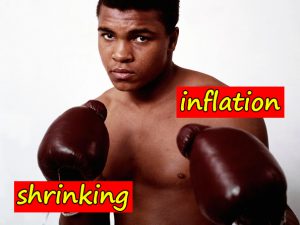
And that’s because shrinkflation, as the name suggests, is that deadly combo of items becoming smaller and smaller while their prices remain the same (or increase marginally).
We’re no strangers to inflation. At any time of the day there’s an ongoing war, an ongoing shortage and a price hike that keeps hiking. So to cover for their rising operational costs, businesses resort to this method to maintain that same margin of profit without losing a horde of customers. Which is lowkey shady tbh, because some of these adjustments can be so minute consumers might not even notice them, like what happened here with a pack of toilet tissue.
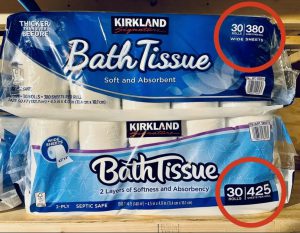
Chocolate lovers might also remember back in 2016 when Toblerone redesigned their famous triangular bars. And this just goes to show how creative businesses can get in an attempt to shrink their products. It was around the time Brexit happened though, so we did also get some great memes out of it.
Brexit just got real.
Via @markcjgreenwood #toblerone pic.twitter.com/VyFT7KGDvv— John Prescott (@johnprescott) November 8, 2016
How to use:
“NAURRRRRR. They gave us a lot more noodles the last time we were here. Now this ramen is all water.”
“Oh, that’s just shrinkflation dude. It’s like a bad magic trick but irl y’know? Now you see it, now you don’t.”
2. Sandwich Generation
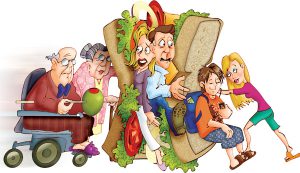
Sandwich : Easy, cheap, convenient
Sandwich generation : Daily maneuvering around emotional landmines, no time to rest, p o k a i
The image pretty much says it all. A sandwich generation is the people who are squashed left and right by their elderly parents and young kids, having to support both sides either physically, emotionally or financially. And it’s not just your standard white bread sandwich either, there’s actually 3 varieties to the sandwich generation.
- Traditional sandwich — gotta look after aging parents + children
- Club sandwich — saddled with aging parents + adult children + grandchildren
- Open-faced — people who look after the elderly even when it’s not their job
To be fair tho, multigenerational living is a long-held practice in Asian communities, including Malaysians, so while the act of looking after both parents and kids is nothing new, it does put into perspective how demanding the job really is.
How to use:
“You know what’s worse than a sandwich generation? A sandwich generation who can’t even afford a club sandwich.” 😓
3. Middle income trap
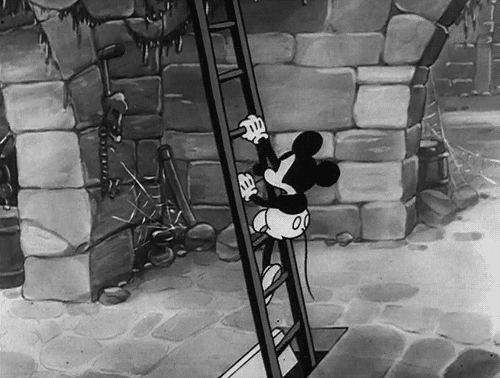
PM Anwar Ibrahim once said that ‘Malaysia has all the characteristics of a middle income trap economy’.
Oof that burn 😓 To add context, just imagine someone stuck in a demanding job that doesn’t pay much. Because of his long hours, he can’t take up a part-time job and he also can’t take leave to interview for a better paying job. To make things worse, he’s too tired after work to learn new skills, so he’s never promoted. He’s stuck earning the same amount of money year after year and only burns himself out in the long run.
And that’s pretty much what a middle income trap means– it’s when a country can’t transition into a high-income one, the reason being all our typical 3rd world country problems. From skilled professionals constantly yeeting out of the country (aka brain drain), to the lack of advanced infrastructure to rampant corruption— you get the idea right?
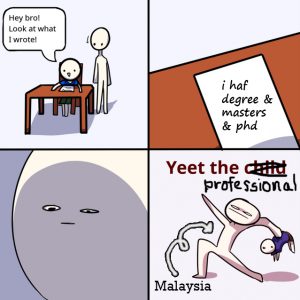
If you’re stuck in traffic or if your job sucks so bad you’d rather read a 20 page dissertation than do your work, this IMF doc describes exactly where Malaysia has gone wrong. Essentially, we’re too reliant on our natural resources which are steadily depleting + we keep importing expensive foreign technology cos we don’t have our own.
How to use:
(A sad joke between sips of kopi c) The middle income country thought it found a way out of the middle income trap until it remembered it spent all its savings on a massive skyscraper that serves better as a backdrop in a Bond movie than a national monument.
4. Gig economy

Okay, now it’s like we’re just making up terms right? But no, the gig economy is as real as your parents asking what your job is and you having to explain that you cat-sit for a living. Haaaa, joking (not really).
A gig is pretty much a part-time job, and a gig economy really just describes the market in which people do part-time jobs for a living. Like Grab, for instance, since Grab drivers can decide the hours or days they want to work. It’s a concept that’s been around for a while, but took a whole new meaning when that You-Know-What event happened in 2020. Because a gig economy is largely online-based and remote, it worked really well for people who suddenly found themselves without jobs.
Like any other job out there, this one has its own set of pros and cons. The best part is that there’s no limit to how much you earn, since you can work multiple jobs at once as long as you can handle it. And ofc, flexibility to work at any time of the day is a major plus point. On the other hand, there’s no perks like medical insurance or EPF that comes with your standard employment. Security is another issue, like having an inconsistent income and working jobs that rely solely on demand.
At the very least, working gigs is a good way to earn some extra moolah though some people definitely go the extra mile and gig the weirdest things like this Fiverr user over here. But hey, whatever works!

How to use:
“Dei, how can you be working on a Sunday? What about our weekly mamak?”
“I freelancer la dei, the only way to survive a gig economy is to take all the jobs I can get.”
5. Veblen goods
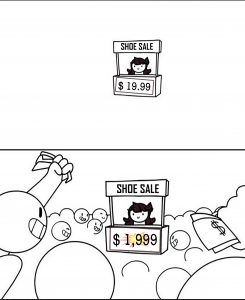
Veblen goods are expensive products that people want, mostly because they’re expensive. They’re generally well-made and exclusive, but don’t offer much added value compared to regular stuff, other than the fact they scream your wealth to the peasants that surround you. It’s just the idea that a higher price equals better quality, which isn’t necessarily true.
Think luxury cars like Rolls-Royces or Bentleys that you sometimes see cruising the streets. As it is, our Malaysian roads are some of the absolute worst in the world and on top of that, Traffic! Jams! Driving fancy cars won’t alleviate those problems. Rather, they’re a status symbol, to put it simply. Other veblen goods include expensive vintage clothes that look like they could be bought for RM5 at a thrift store and handbags worth thousands that can barely fit a phone.
But when you’re swimming in all that cash, what’s another RM1 million in the grand scheme of things? (Nothing🥰)

How to use:
Protip to spot a Veblen goods consumer: People who prefer Starbucks over kopitiam coffee
6. Fungible vs. non-fungible goods
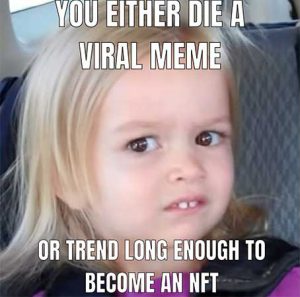
A fungible (not to be confused with fungi, the mushroom) is an item that has uniform value, like money. Say you lend someone RM20, they don’t have to pay you back with an RM20 bill, they can do it with two RM10 bills, four RM5 bills, twenty RM1 bills etc. Non-fungibles on the other hand, have differing values and are unique. So if you borrowed your sister’s favourite jeans, you can’t just grab another pair of jeans from the pasar malam to replace it– the price, style and even the colour may be same, but it’s probably not as cute.
Yall remember back when NFTs were taking over every online conversation? Well, NFTs are a type of non-fungible, specifically, a non-fungible token, meaning they exist only in the digital world. Now, did you know, some of the memes you use everyday are NFTs too? This doggo, for example, is worth a whopping RM 18 mil.

How to use:
🎶You must not know ’bout me
You must not know ’bout me
I can have another you by tomorrow
So don’t you ever for a second get to thinking
You’re non-fungible🎶
7. Bull and bear market

It’s not enough that we describe the economy with sandwiches but now there’s animals??! Okay, but this one is relatively straightforward la. A bull is strong and charging ahead, and that describes the market when it’s on an upswing. Basically, that means the stock market is stable, GDP is rising and unemployment is generally low.
Contrary to that, though no offence to all bears out there, a bear market is when the economy is sluggish, unstable, and people are losing money left, right and centre like how it was immediately post kohvied. That is to say, the market is so bad it’s practically ✨un-bear-able✨
It’s important to know when the market is in its bull or bear phase because it affects how you handle your investments. Like if the economy is down and stocks are cheap, maybe that’s the time to swoop in and buy some. Uh wait… on second thought, maybe don’t take financial advice from us 🤐
How to use:
“The difference between a bull and bear economy is like Sunday night and Monday morning.”
“Omg you’re right. Wig snatched.”
- 98Shares
- Facebook78
- Twitter5
- LinkedIn5
- Email5
- WhatsApp5

